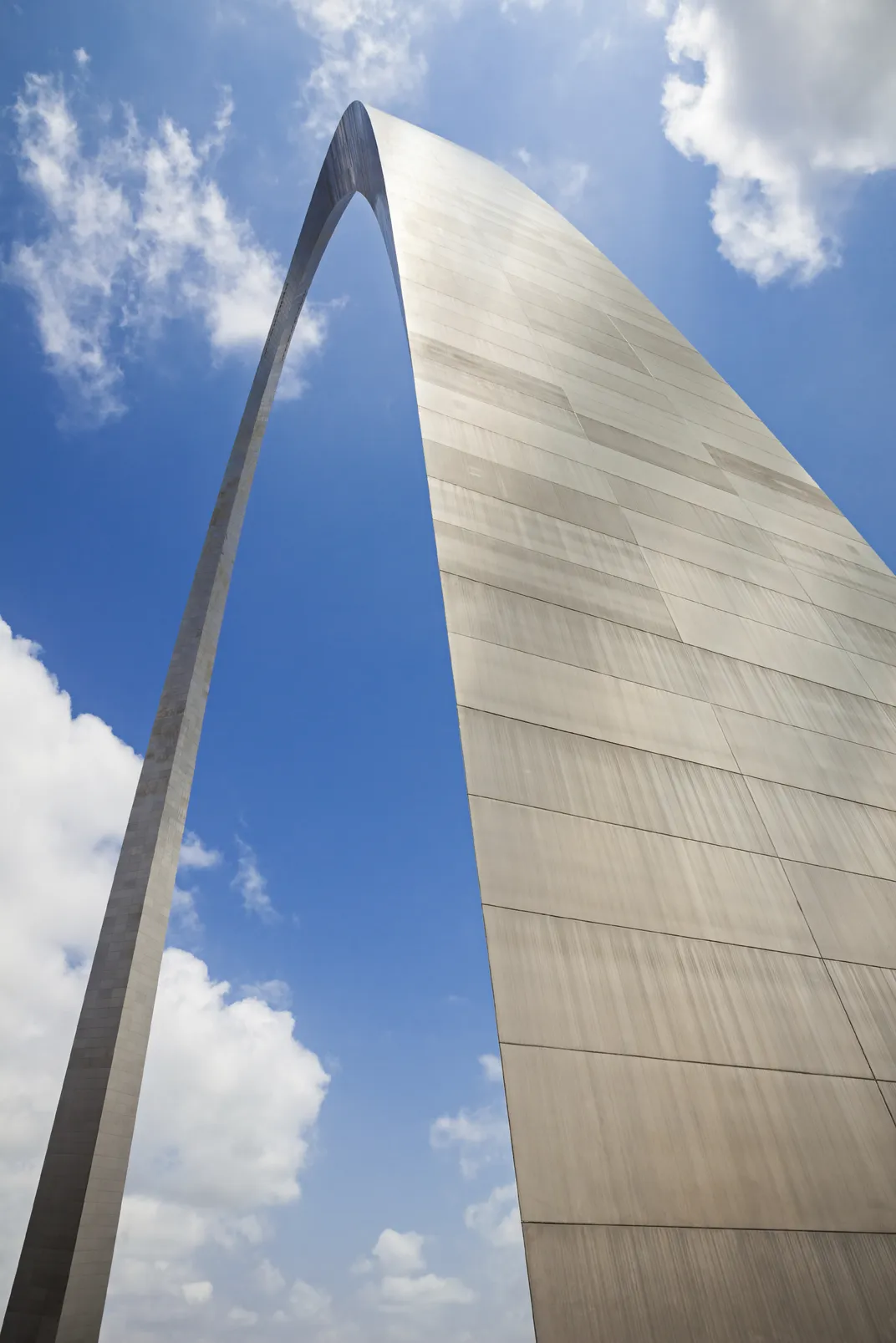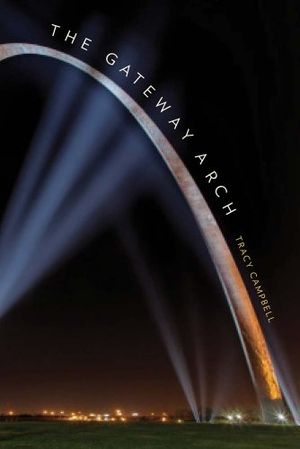The Twisted History of the Gateway Arch
With its origins as a memorial to Thomas Jefferson’s vision of Western Expansion, the Arch has become a St. Louis icon
/https://tf-cmsv2-smithsonianmag-media.s3.amazonaws.com/filer/ee/29/ee29f55b-813b-4043-a25e-cf7eb8d158fb/gateway-arch.jpg)
It’s the nation’s tallest monument, soaring 630 feet above the Mississippi River, 886 tons of stainless steel welded into a seamless curve, assembled with such precision that if either leg had veered off by just one-sixty-fourth of an inch the two couldn’t have been joined in the middle. Completed 50 years ago this month, the Gateway Arch, the Midwest’s best-known monument, was hailed as linking “the rich heritage of yesterday with the richer future of tomorrow.”
Eero Saarinen, a young, Finnish-born aesthete, won a 1947 competition for the design, but not before Eero’s father, Eliel (who designed Art Nouveau landmarks in Helsinki, including the famed central railway station), received a mistaken telegram including his name among the finalists. Eliel uncorked the champagne—only to take out another bottle after receiving word from an apologetic official that, in fact, his son had beat him out. Eero went on to design Washington Dulles International Airport, the TWA terminal at JFK International Airport in New York and a celebrated line of high modern furniture, but died of a brain tumor at 51, fourteen years after he dreamed up the arch and four years before it was finished.
Today there’s little doubt about the gleaming monument’s visual appeal—there are three million visitors annually—but the promised “richer future” hasn’t exactly come to pass, and social critics put some of the blame for that failure on the arch itself.
In 1934, local business leaders promoted the idea of a memorial to Thomas Jefferson and the expansionary vision of his Louisiana Purchase. But their real aim, according to Tracy Campbell, author of The Gateway Arch: A Biography, was to rid the city’s waterfront of “blighted” property and bring in federal construction dollars. The city engineer, W.C. Bernard, presented the plan as “an enforced slum-clearance program.”
Following a rigged bond measure to cover the city’s costs—the St. Louis Post-Dispatch counted 46,000 phony ballots, more than enough to tilt the outcome, and denounced the project as “election thievery”—40 square blocks of riverside property were bulldozed, including 290 businesses, mainly small factories in historic cast-iron buildings employing some 5,000 workers. FDR’s interior secretary, Harold Ickes, nearly blocked the venture as “speculative real-estate,” until the war disrupted civilian public works projects. But after the war, President Harry Truman, a Missourian, let the money flow. Still, the site lay in empty squalor for a decade—and then came President Dwight Eisenhower’s Interstate System of highways, a stretch of which passed along the site, reviving the arch’s appeal as an outsized attraction for the vast stream of Americans vacationing in their cars.
But the highway also cut off many residents—mainly poor and black—from the development around the arch, aggravating racial tensions still fresh from when construction unions barred African-Americans from working on the site. The displacement came to epitomize 20th-century “urban renewal”—a euphemism, James Baldwin quipped, for “Negro removal.”
In 1940, St. Louis was America’s eighth-largest city, an aspiring New York of the Midwest. Today its population ranking has fallen to 60th, and it has become the nation’s fifth poorest city. “As a tourist attraction,” Campbell wrote, the arch “has proven a remarkable success,” but, like so many American cities optimized for a future dominated by cars and the highways needed to bring them in from the suburbs, “St. Louis might have had a better chance of renewal if it had never torn down those historic cast-iron buildings.”


The Gateway Arch: A Biography
/https://tf-cmsv2-smithsonianmag-media.s3.amazonaws.com/accounts/headshot/FredKaplan-byCarolDronsfield1.jpg)
/https://tf-cmsv2-smithsonianmag-media.s3.amazonaws.com/accounts/headshot/FredKaplan-byCarolDronsfield1.jpg)